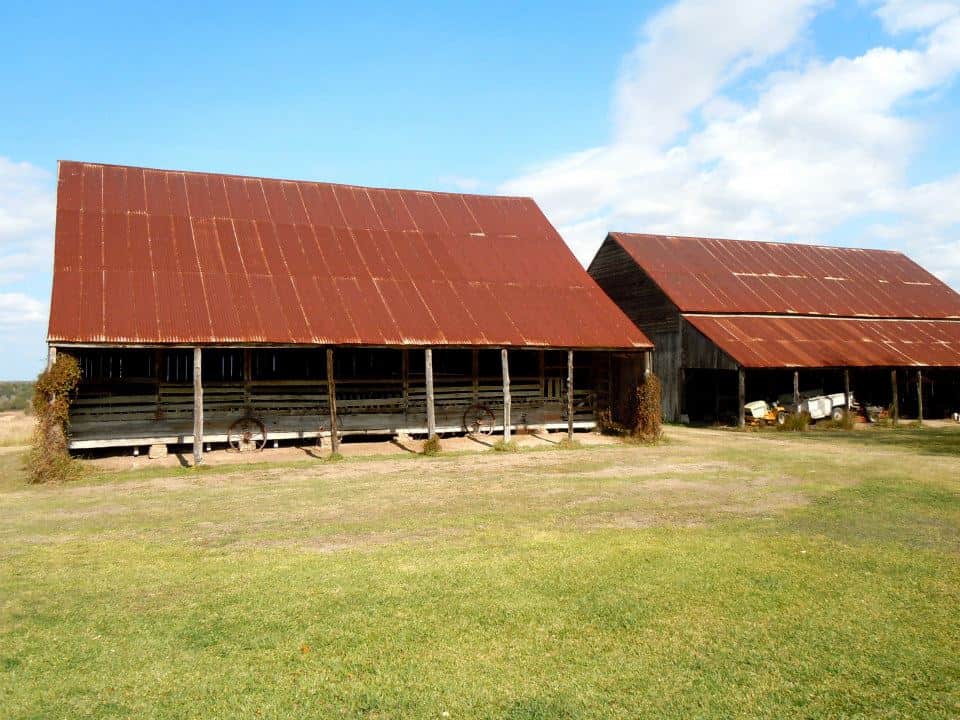In simple terms, a plantation is an agricultural estate often specializing in cash crops such as tobacco, sugarcane, or cotton. However, the history of American plantations, like the largest plantation in Texas, often depended on slave labor. Because of this history, the term “plantation” has painful connotations.
Like most plantations in the United States, the largest plantation in Texas also depended on slave labor. However, because of mismanagement, this estate largely fell apart as a business venture after ten years. While this property is the largest plantation in Texas, it wasn’t the most successful one.
What Is the Largest Plantation in Texas?

A little bigger than the LAX airport, the Nassau Plantation stretched over 4,428 acres when it was first purchased.
The Nassau Plantation was 4,428 acres in size at the initial purchase. That’s about one-and-three-tenths times the size of the Los Angeles International Airport. On January 9, 1843, the Adelsverein bought and established the Nassau Plantation. And, in 1968, a Texas State Historical Marker was placed at the site (Marker 3550).
Where Is the Nassau Plantation Located?
The largest plantation in Texas can be found in Fayette County, very near the town of Round Top. Round Top, itself, is only 0.97 square miles in size. The town also has a population of 90 people, according to the 2010 census. The Nassau Plantation is 6.9 square miles, making it over seven times the size of Round Top.
History of the Plantation

To harvest sugarcane in the 1800s, slaves had to cut down acres of sugarcane and transport it to a mill, where the juices were extracted from the crop.
©Yatra4289/Shutterstock.com
The Nassau Plantation was purchased by the Adelsverein, a society organized by German noblemen to promote immigration to Texas. The Nassau Plantation was named for the German Duke of Nassau, the Grand Duke of Luxembourg. The Duke of Nassau was also named Protector of the Society. Through organized mass emigration, purchased land, and land grants, the Adelsverein hoped to create a new Germany in the Lone Star State.
Bought on January 9, 1843, the directors of the Nassau Plantation purchased the land at 75 cents an acre. In addition, the society acquired 25 slaves to farm the land. The slaves then constructed a blacksmith, smokehouse, stables, house for the overseer, and slave quarters. They cultivated crops such as corn, cotton, tobacco, and sugarcane, and animals like cows and pigs were raised to be used for food and to sell.
A quarter mile from the farm was the manor. While the largest plantation in Texas was designed to be a new German settlement, the Adelsverein instead sent German immigrants to other settlements in New Braunfels and Fredericksburg. The Nassau Plantation became a vacation retreat for officers and a hideout for society members to lie low from creditors.
What Happened to the Largest Plantation in Texas?

The Nassau Plantation’s barns date back to the 1800s.
A year after being purchased, Prince Carl of Solms-Braunfels, a German prince and military officer in the Austrian army, came to inspect the plantation. The prince advised the Adelsverein to get rid of the property rather than be associated with slave labor.
The Adelsverein did sell the Nassau Plantation, but they sold it because of debt. Because of the inexperience and mismanagement of the different directors of the Nassau Plantation, the land, farm, manor, and slaves were sold to Otto von Roeder. Roeder sold off pieces of the property in 1850, however, things became complicated when the Bexar District Court ordered the property to be sold to the highest bidder to compensate the creditors of the Adelsverein. In 1853, James A. Chandler bought the plantation. But, because Roeder had purchased some of the property and sold off other segments, Chandler took Roeder and the other buyers to court for the title and possession of the plantation. It wasn’t until 1868 that Chandler finally won possession of the lands.
The Nassau Plantation Today
While it is the largest plantation in Texas, today, the property is divided into several privately owned farms and ranches. A state historical marker has been placed at the intersection of County Road 279 and Farm Road 1457, 2 ½ miles east of Round Top and a half mile from the site of the manor house.
Visiting the Nassau Plantation
The largest plantation in Texas is not open to public tours, as it comprises several farms and ranches that are private property. However, you may be able to befriend one of the owners who will give you a tour, like the individual of the “All Güt Things: The Life and Death of Texas German” Facebook page did. Here is a video he recorded of his tour:
The photo featured at the top of this post is © Breckenheimer, CC BY-SA 3.0 – License / Original
Thank you for reading! Have some feedback for us? Contact the AZ Animals editorial team.







